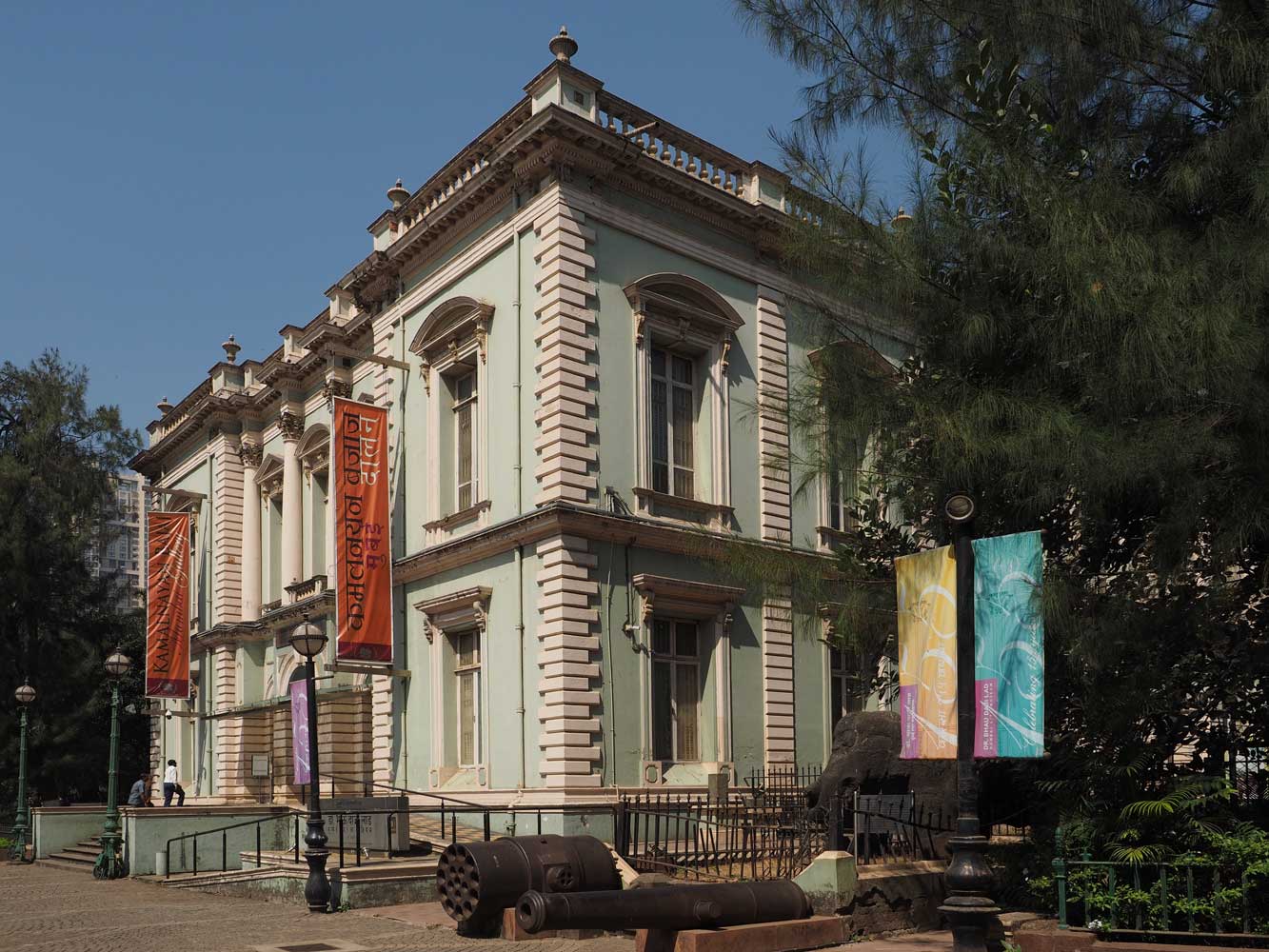
A stone elephant from Elephanta Island and old cannons stand beside the museum.
5 February Mumbai
The train arrived on time a little past 4 a.m. at
Chhatrapati Shivaji Maharaj Terminus—better known as Victoria Terminus—and said
to be the city’s most extravagant Gothic building, but in the predawn darkness I
couldn’t appreciate the architecture. I easily got an Uber taxi to my Airbnb
room, provided by an older couple in an apartment on Tardeo Road. A 6 a.m.
arrival seemed above the call of duty, but the wife gets up early for her Hindu
puja and had offered to let me in. Normally check-in is 3 p.m., so I was glad to
get in early and take a rest. Mumbai has a reputation for expensive
accommodation, and I got a very good deal of $165.43 for 11 nights. The
apartment is four floors up and is set back far enough from the road to minimize
traffic noise. In early afternoon I went for a walk along Mumbai’s frenetic
roads to Shagun Veg Restaurant and had a fine South Indian thali. Along the
roads I saw lots of cats, many looking in good shape. I spent the rest of the
day reading the Times of India and hanging out.
This is my third visit
to India’s second-largest city, the country’s financial powerhouse and center of
the world’s most prolific film industry. Towering billionaire mansions overlook
vast slums in an extreme contrast between rich and poor. I first visited in the
early 1990s on a backpack trip between Mumbai and New Delhi, then returned on
Bessie Too the Bicycle in early 2002 on a long ride between Lahore (in Pakistan)
and Kanyakumari (southernmost tip of India). One would think that cycling in and
out of this huge city would be extremely difficult, but there’s a trick that
makes this easy—a boat service across the harbor from Mandwa to the south.
6 February Mumbai
For breakfast I liked the South Indian ‘fast-food’ Maji
Sagar near the apartment, and had the idly and vada plate, toast-butter-jam, and
milk tea. On my previous visits to Mumbai I had enjoyed the city’s two big
museums, and set out by Uber taxi east to the former Victoria & Albert Museum,
now the Dr. Bhau Daji Lad Museum
www.bdlmuseum.org (open daily except Wed. 10 a.m.-6 p.m.; Rp. 100 foreigner;
photography allowed, but no flash). The current name honors an India supporter
who did a lot more to make the museum a reality than any of the British royals,
though a bust of Queen Victoria and a statue of Prince Albert still preside
here. The museum building went up in 1872 with a gorgeous Renaissance revival
style featuring ornate columns, railings, staircases, ceiling mouldings, and
chandeliers. I thought the restored interior the top attraction, but the
exhibits have much beauty too. The main floor displays fine arts and crafts,
organized by category such as ceramics, wood carvings, brass work, bidri ware,
lacquer, ivory, silver, and miniature paintings. Most pieces date from 18th to
early 20th centuries. Up on the mezzanine, figures and dioramas depict India’s
many cultural groups, religious activities, military, farming, and games.
Exhibit rooms at end of the museum and out on the rear terrace had a special
exhibition by Nalini Malani, famed as a pioneer of experimental art in India. I
found the installations and video to be strange stuff!

A stone elephant from Elephanta Island and old cannons stand beside the
museum.

Prince Albert, consort of Queen Victoria, still dominates the central hall
as he has since inauguration of the museum in 1872.

A few of the many examples of the JJ School of Art Pottery on display (late
19th-early 20th C)

A silver kettle from Varanasi (late 19th-early 20th C)
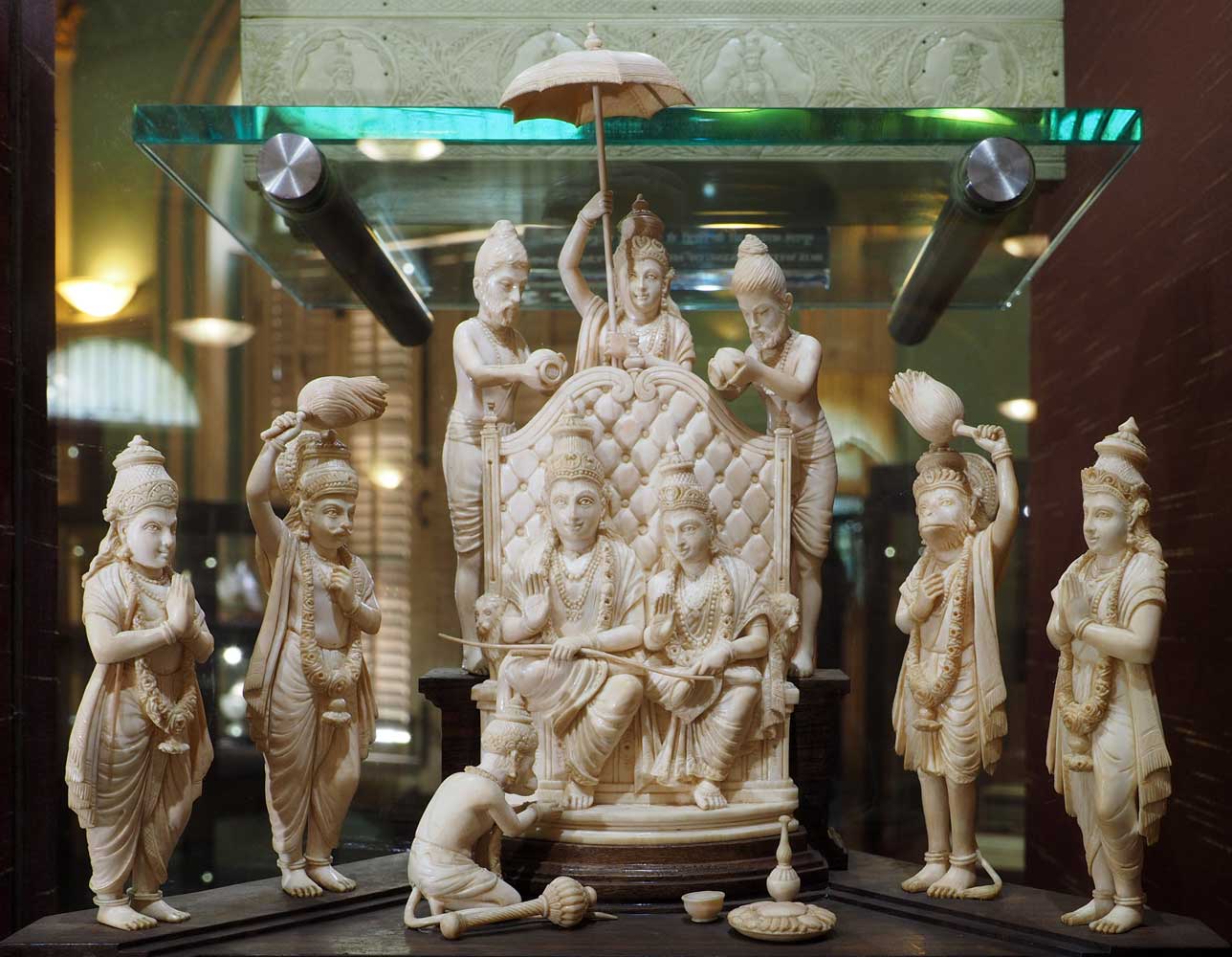
Ram’s Coronation (ivory)
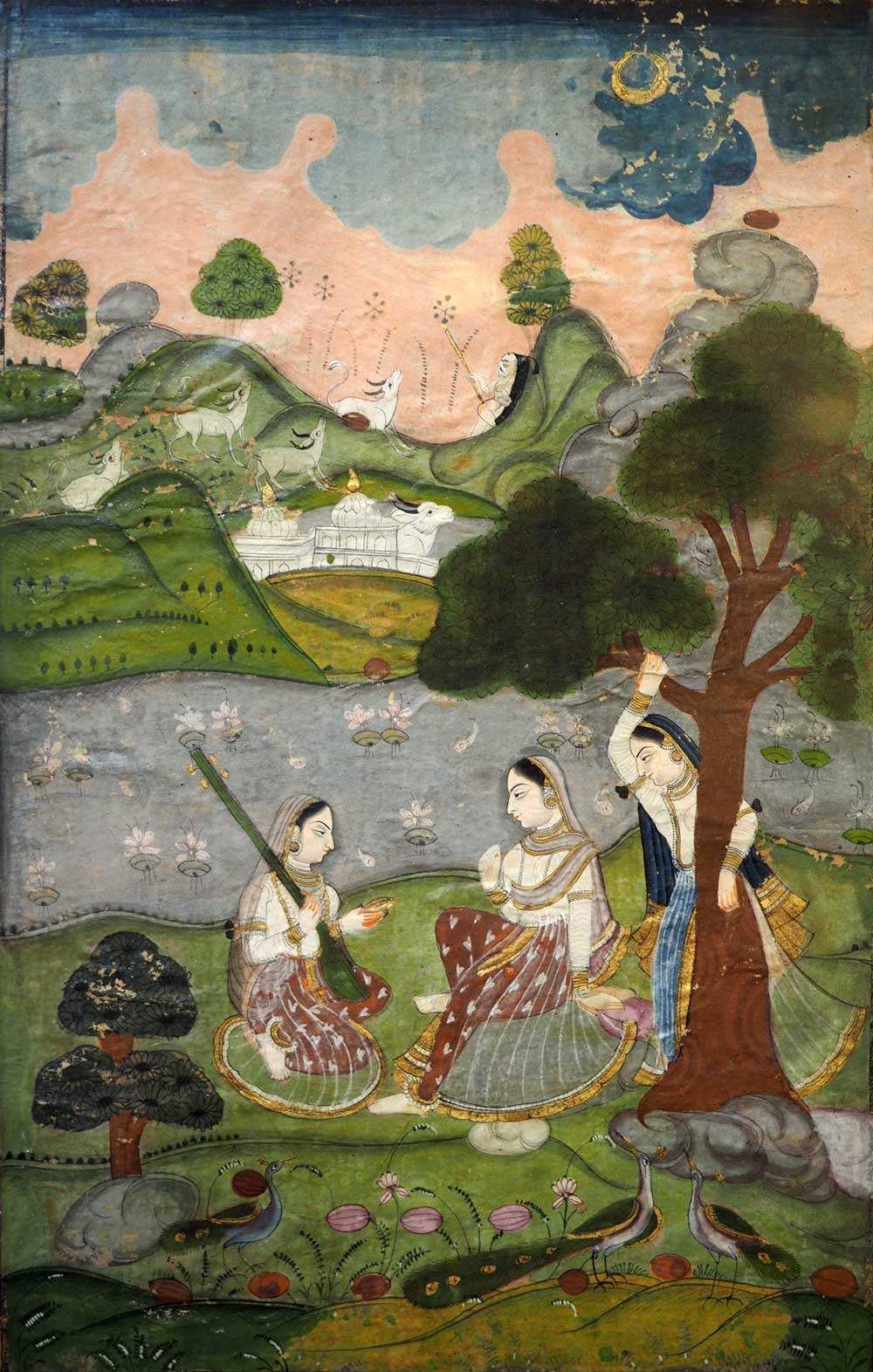
Kakubha Ragini (c. 18th C, Jaipur)
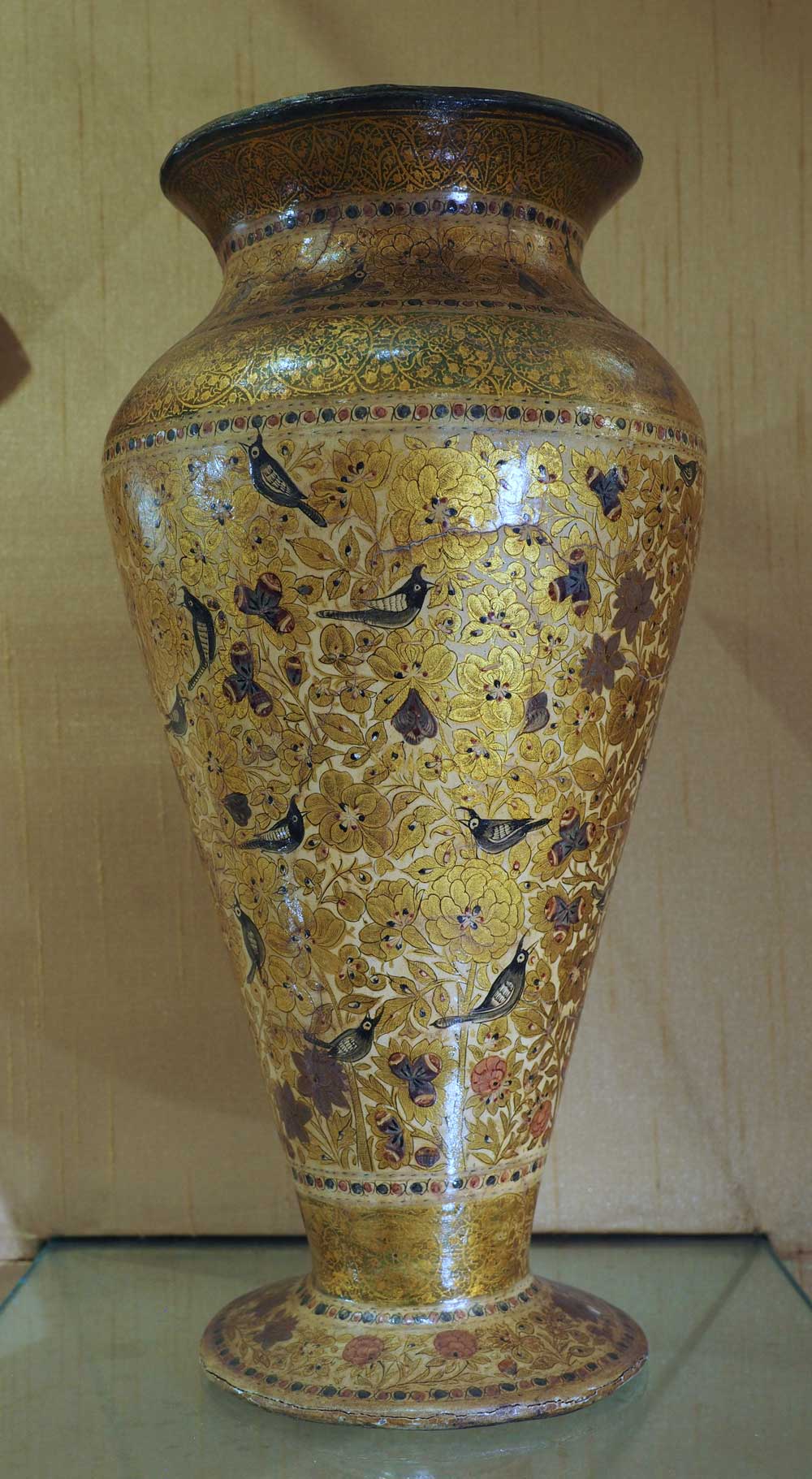
Papier mâché vase from Kashmir (late 19th-early 20th C)

Staircases to the mezzanine

View from the mezzanine
On a ride to the southwest, my taxi driver maneuvered through challenging rush-hour traffic to near the Royal Opera House, the only one to have survived in India. The grand Baroque-style building opened in 1912 with a luxurious interior and an architecture that had a blend of European and Indian elements. During the 1970s and 80s crowds came to enjoy Bollywood movies, but when that business faded the building closed in 1993. After years of neglect, a long restoration returned the Opera House to its former opulence in 2016. Curious to see it, I checked for upcoming events and found that a special screening of the 2019 Indian film “His Father’s Voice” would be taking place tonight, and admission was free. The story—mainly told in English—takes place in Tamil Nadu and tells of a young Western boy who is taken from his father by his mother, then returns as a young man. Music and Indian classical dance form a big part of the story. This was the first movie for the actors and director, and they did very well. After the show, the director and members of the production crew came onstage to respond to questions by members of the audience, many of whom are involved in film. Afterward I got to see the ornate lobby of the opera house. You can read about the building and see what’s coming up at http://www.royaloperahouse.in For dinner I grabbed a tomato uttapam at Maji Sagar near my Airbnb.
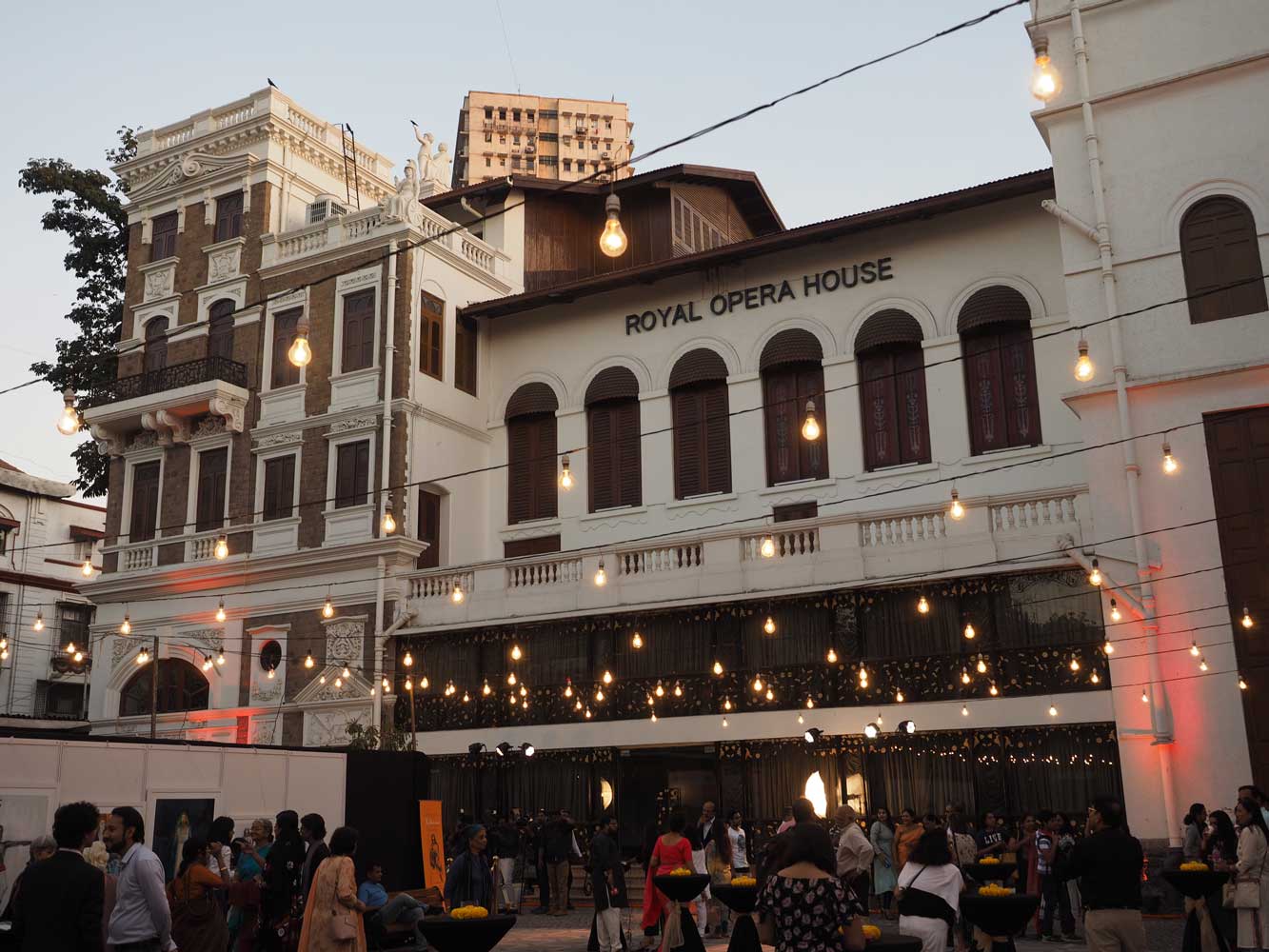
Social time before the screening
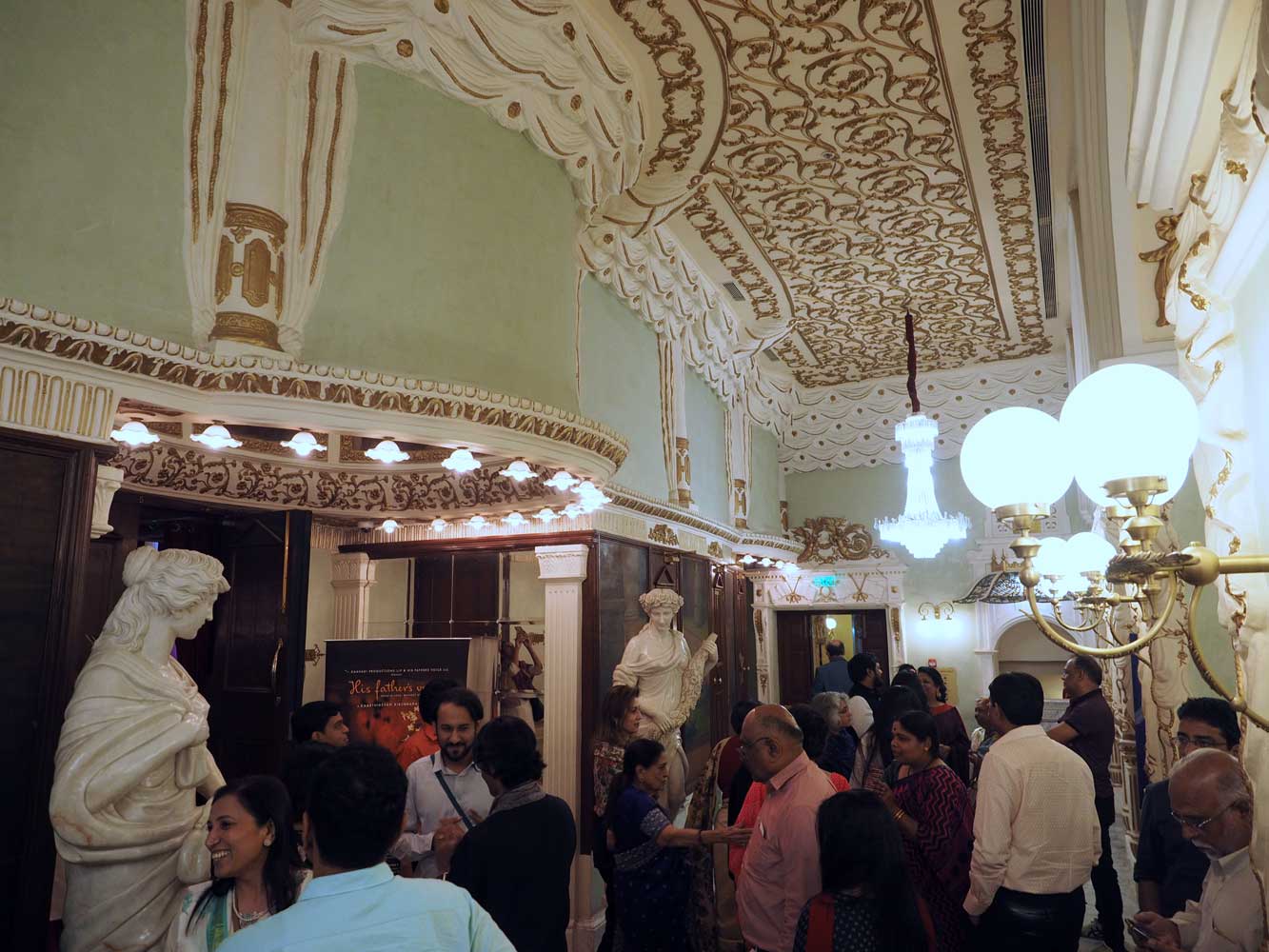
Entrance to the main level from the lobby
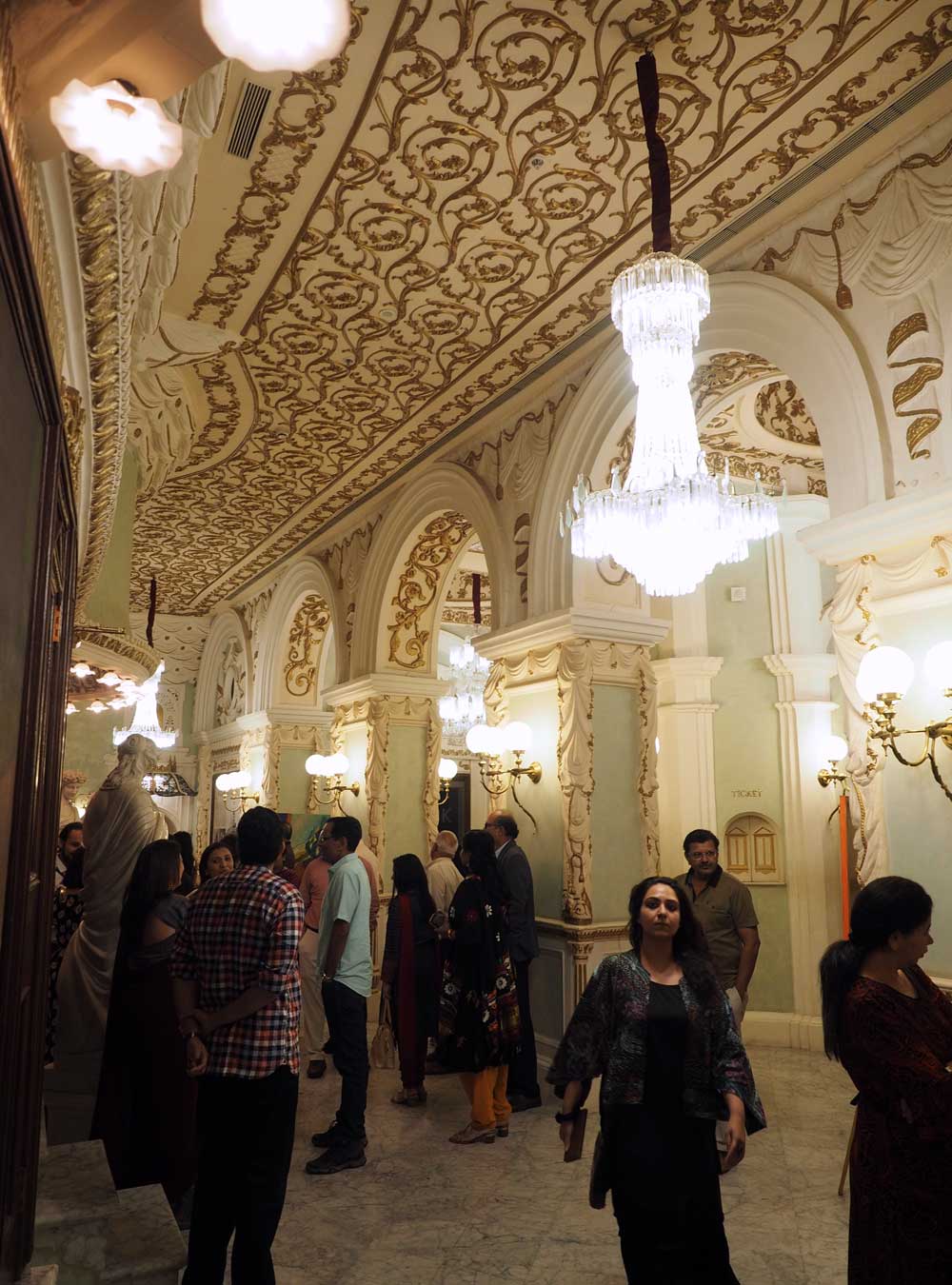
The gilded lobby
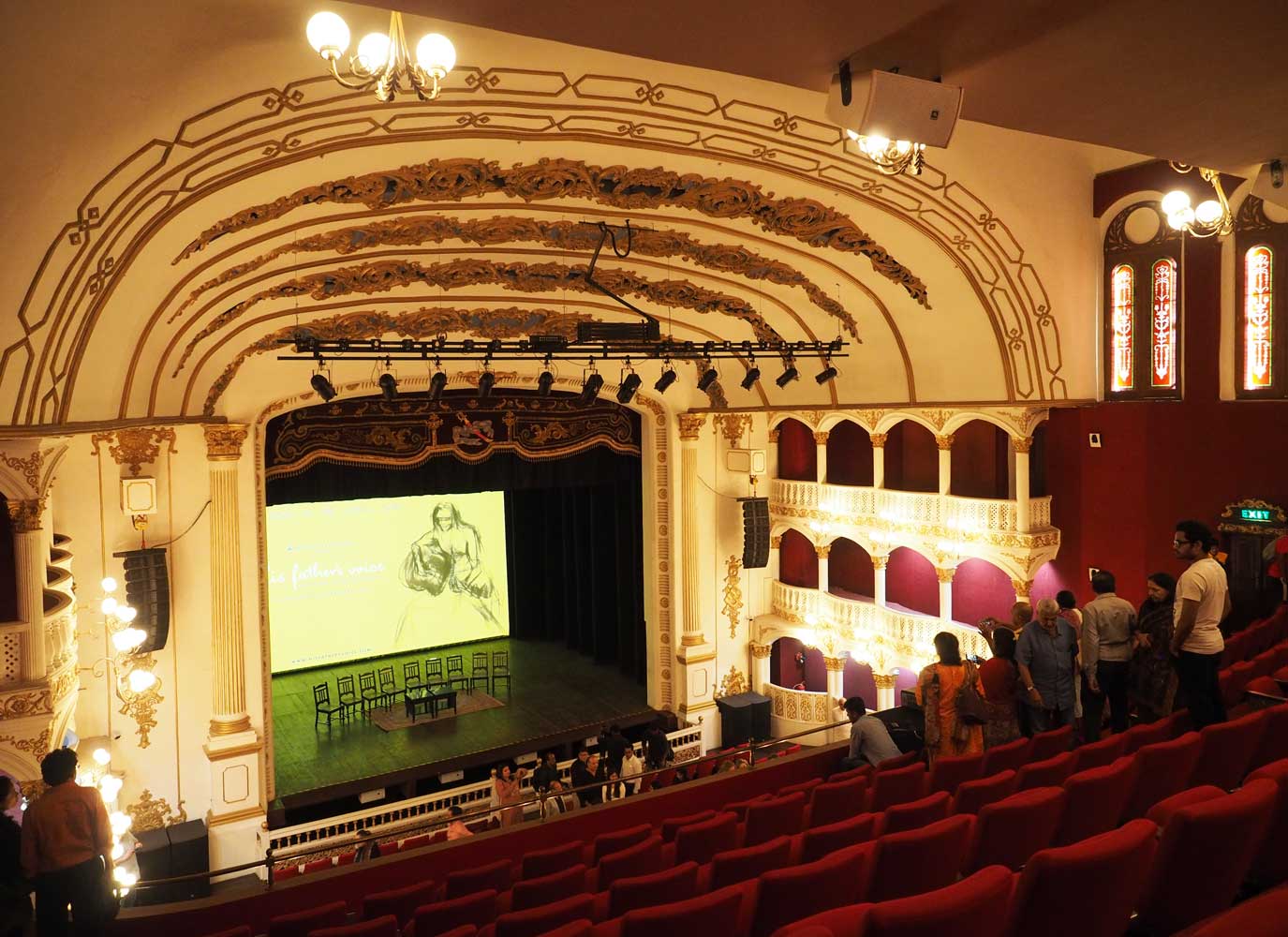
After the show
7 February Mumbai
In the afternoon I got a taxi
north to Nehru Planetarium
https://www.nehru-centre.org/planetarium/ for the 3 p.m. English show. I was early so
headed to the large Nehru Centre just to the south to see a photographic exhibit
and a group painting show on the ground floor. Back at the planetarium I forked
over the Rp. 100 entry. Lots of schoolkids had come too, but there were plenty
of seats. The show actually began 15 minutes later so that we visitors could see
the giant photos and other space-related exhibits. Once inside the domed
chamber, we got an introduction to the night sky with both Indian and Western
names for the major stars and constellations. The main show turned out to be a
fantasy of an Indian spaceship making a 600-year journey to a planet in another
solar system. Afterward I returned to Nehru Centre and went one floor up to the
very detailed and well illustrated Discovery of India Exposition (free, but no
photos) that tells of the nation’s prehistory to the time of independence.
Another exhibit here relates the life story of Jawaharlal Nehru, India’s first
prime minister. There’s a reference library on this floor too.
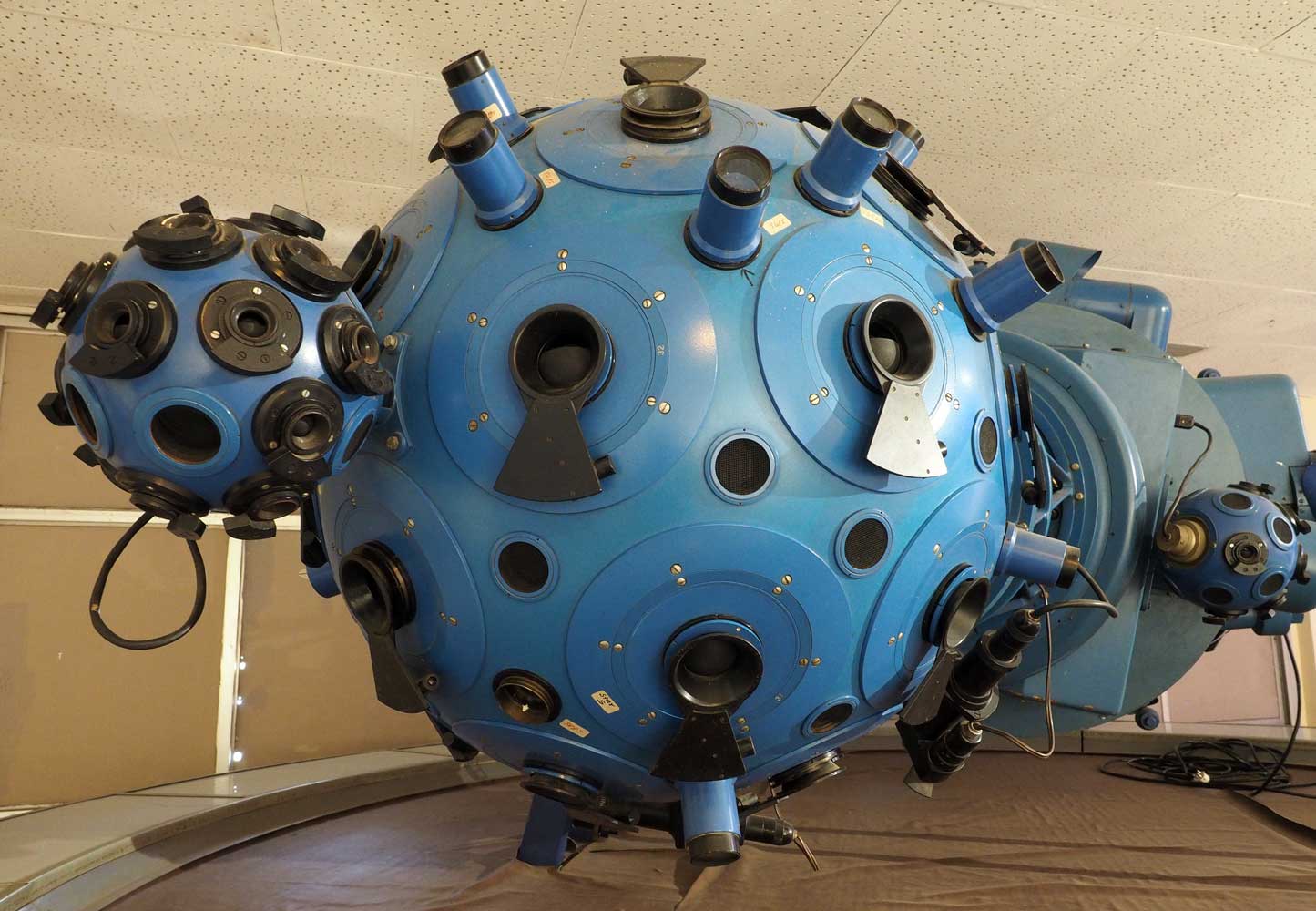
Carl Zeiss Universal Planetarium Projector, in operation here from
1977-2003. The planetarium now uses a digital projection system.
I walked south a bit, then managed—difficult even with a traffic light and traffic police—to cross super busy Dr. Annie Besant Road to the NSCI Sea Promenade, a long sidewalk beside the shore of Haji Ali Bay. Indians crossing a busy road will often walk right into traffic, but I’m not that brave! What should have been fresh breezes wafting off the sea instead carried a stink from the black polluted waters. At the south end of the promenade I turned past a mosque to a long pedestrian causeway out to one of Mumbai’s iconic sights, Haji Ali Dargah. Sufi saint Haji Ali had reported died on a pilgrimage to Mecca and his casket miraculously floated back to this spot. A large crowd was making its way to and fro along the causeway, passing a row of beggars seeking alms on one side and shops selling sweets, shawls, and souvenirs on the other. The tomb, draped with a red and green cloth sits under a shelter on a tiny island. Behind the tomb stands a beautiful mosque of white marble with pietra dura (semi-precious stone) inlays. I watched the sunset, then returned on foot to my Airbnb, stopping for a vegetable spring roll (that had way too much onion) at Maji Sagar.

You can see the minaret at Haji Ali Dargah across the bay on the right in
this view from the NSCI Sea Promenade.
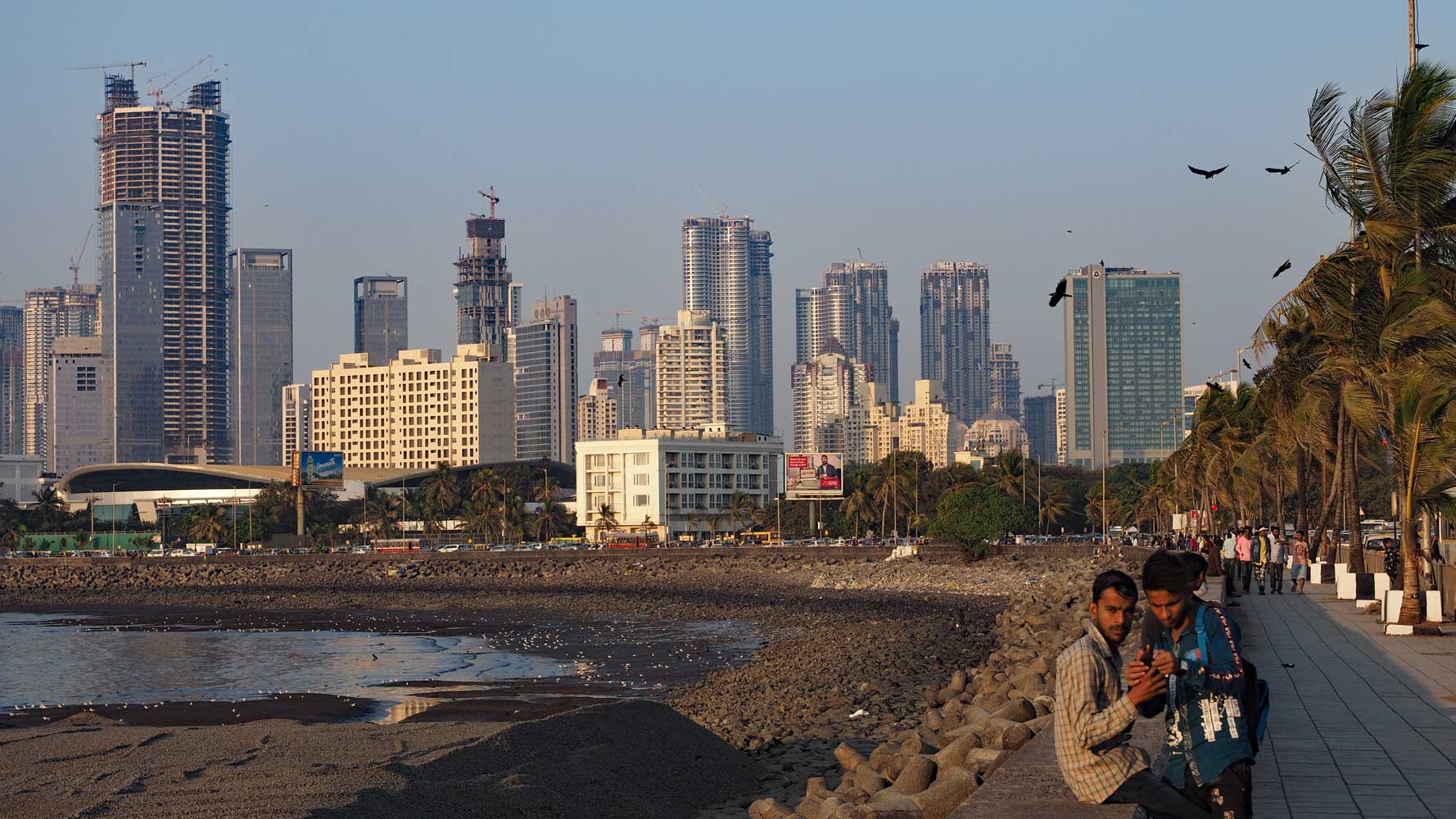
View north along the NSCI Sea Promenade
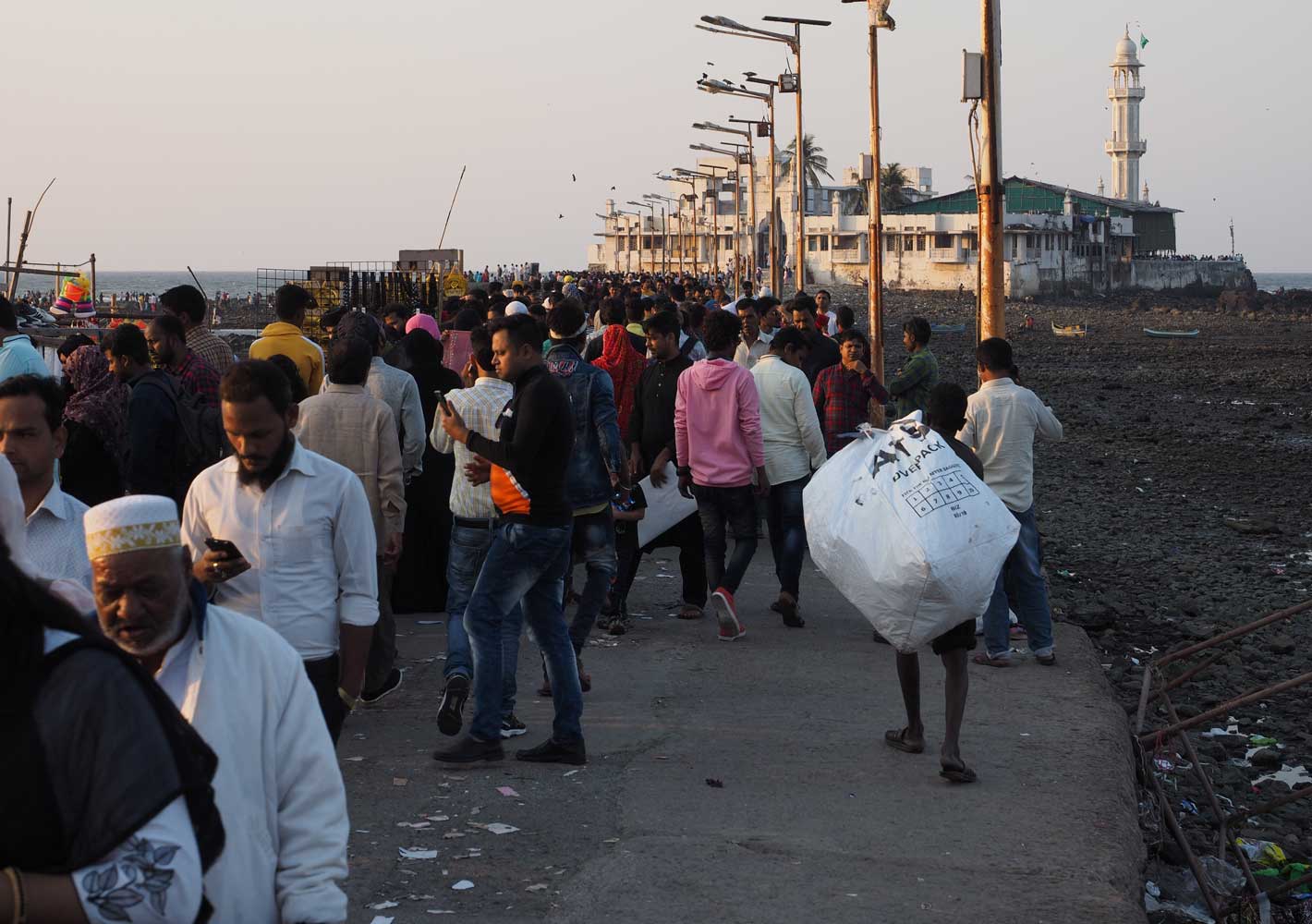
The crowded path out to Haji Ali Dargah
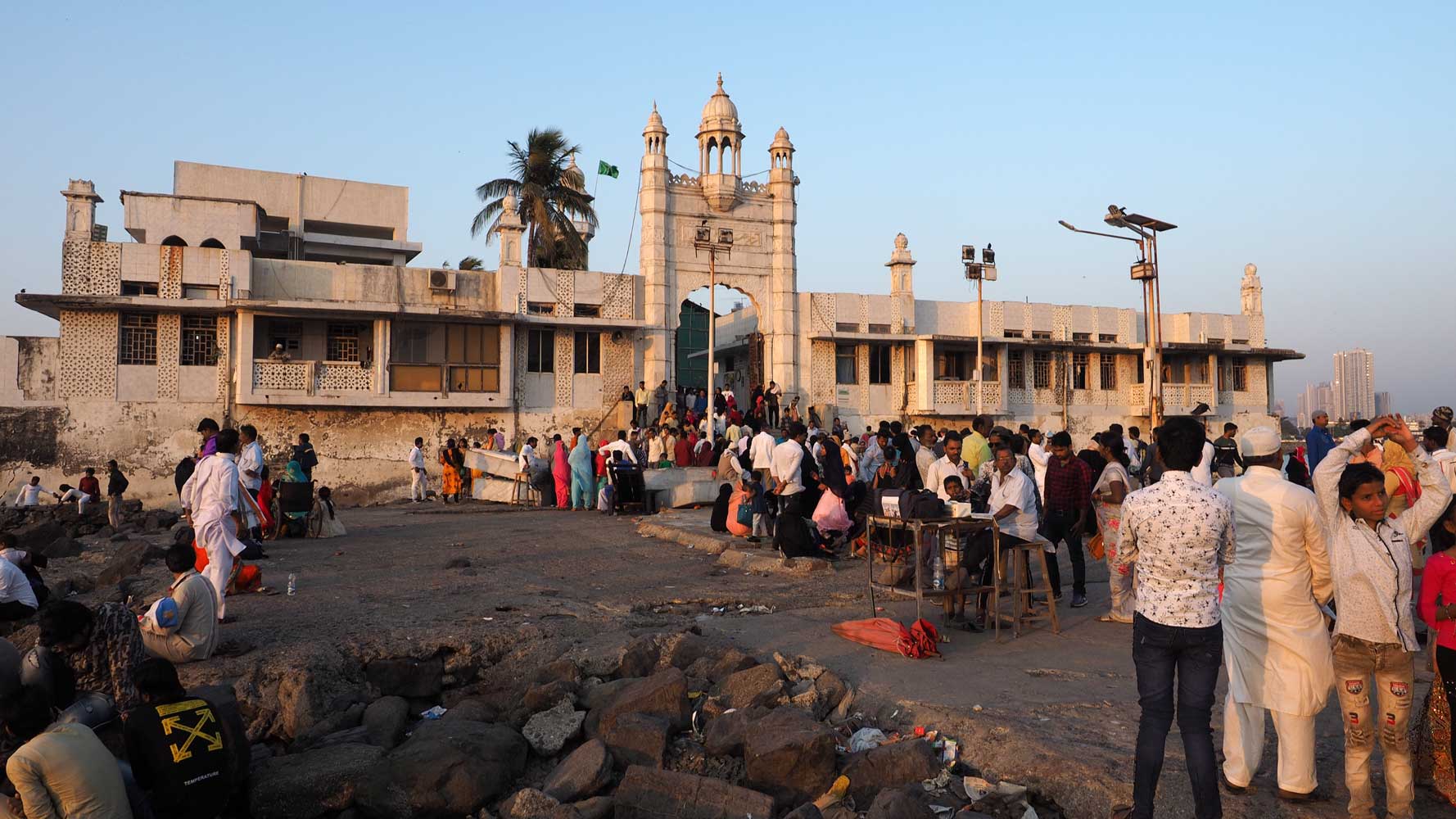
Gate of Haji Ali Dargah

Haji Ali Tomb

At the end of the peninsula behind Haji Ali Dargah

The sun goes down.
8
February Mumbai
I had gotten behind on this journal and photo sorting, so I
dedicated the day to catching up on those activities, then posted the latest on
my website. For dinner I tried something different, tofu with black bean sauce
at China Palace Restaurant across the road. Authentic and very spicy, the food
likely came from a Sichuan recipe.
9 February Mumbai
Today is the
final day of the Kala Goda Arts Festival, named for a district in southern
Mumbai that’s packed with heritage buildings, museums, and art galleries. I got
a taxi to one of the many festival venues, Jehangir Art Gallery
www.jehangirartgallery.com for a
look at several exhibitions but I found the rooms a bit too crowded and decided
to return another day. I headed
outside and walked over to Keneseth Eliyahoo Synagogue, built in 1884 and
recently restored. Ornate pillars and a large stained-glass window decorate the
lofty main hall and its balcony.

Keneseth Eliyahoo Synagogue
Of course I had to visit Mumbai’s iconic Gateway of India, built to commemorate the visit of King George V and Queen Mary in 1911, though not finished until 1924. Small ferry boats come and go from docks behind it.

A huge crowd has come out to the Gateway of India this evening.
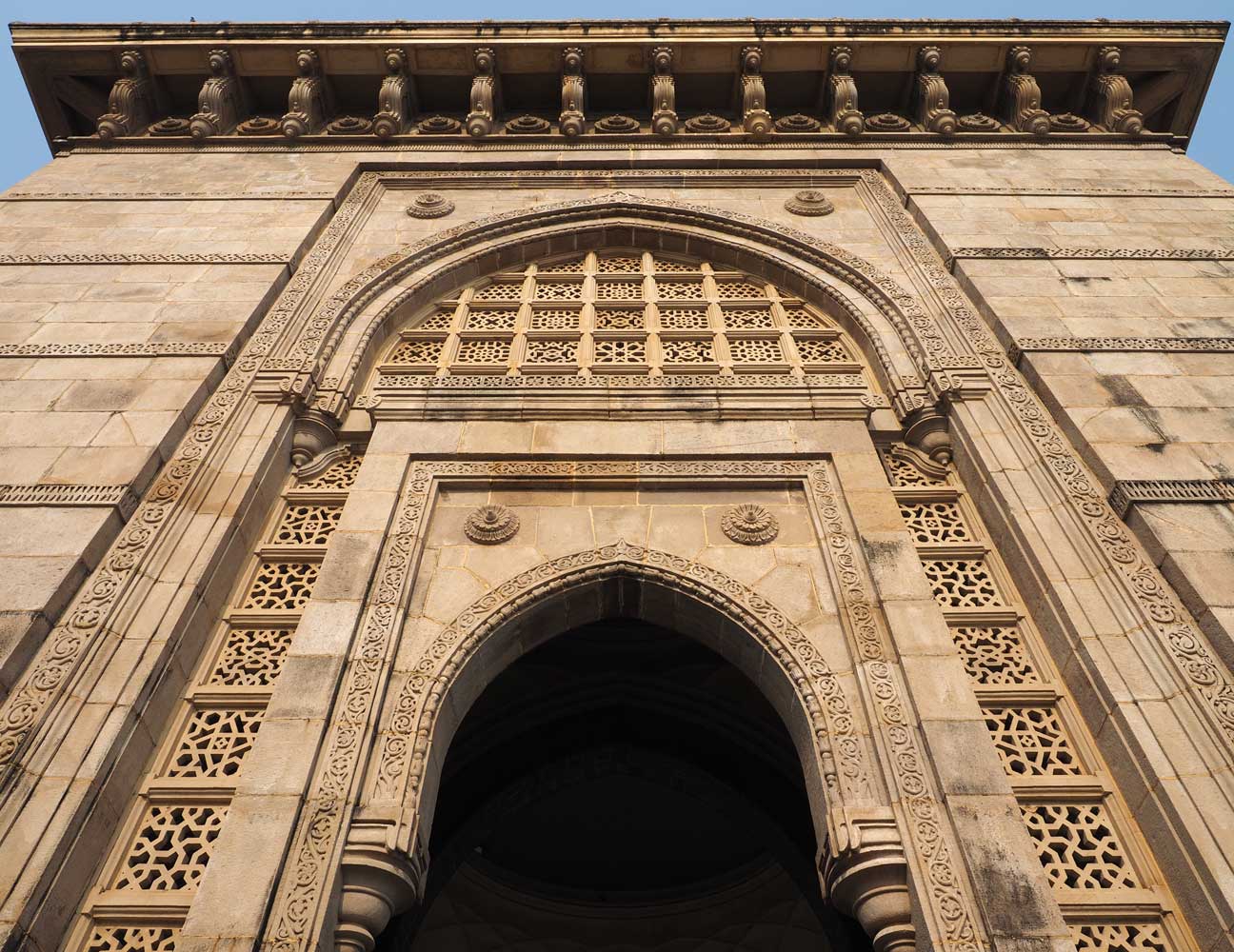
Lots of impressive details in stone! The interior is empty and closed to
visitors.
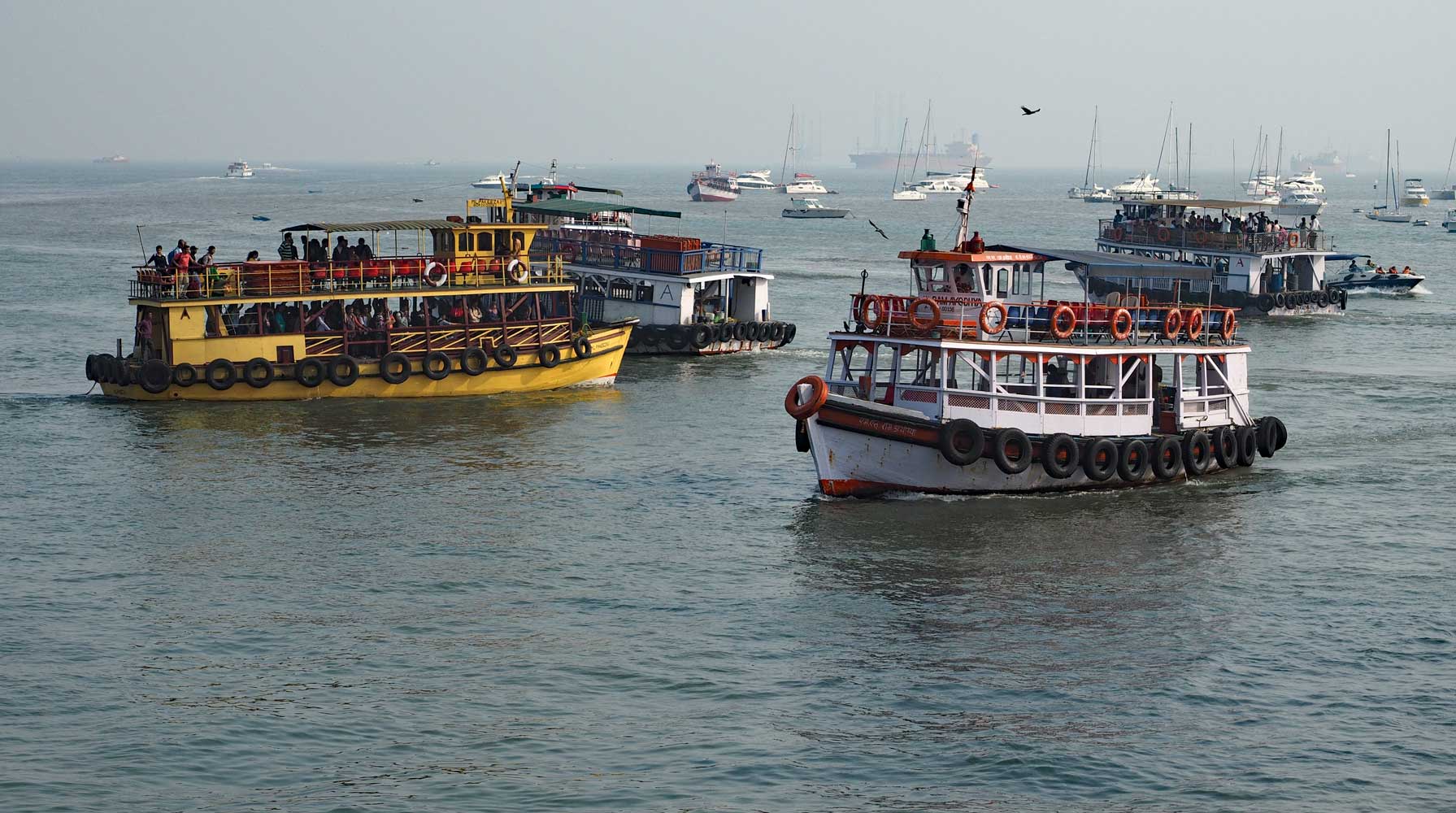
Most of these ferries are going to or coming from Elephanta Island.
I then followed my guidebook’s walking tour north from the Gateway of India past many imposing heritage buildings and stepped in the David Sassoon Library & Reading Room, normally closed to non-members, but today hosting a literature talk of the festival.
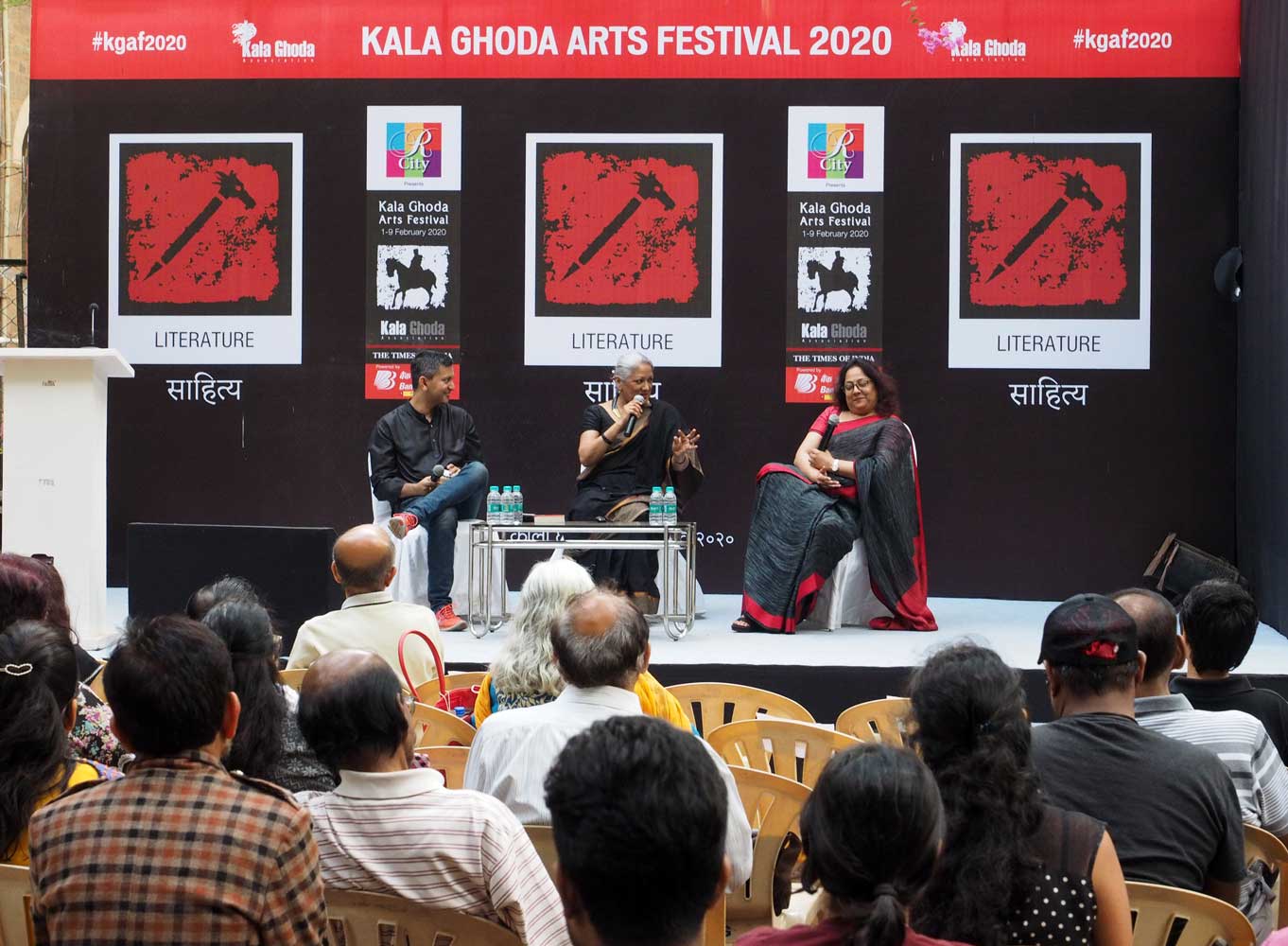
A festival event in the courtyard of the David Sassoon Library & Reading
Room
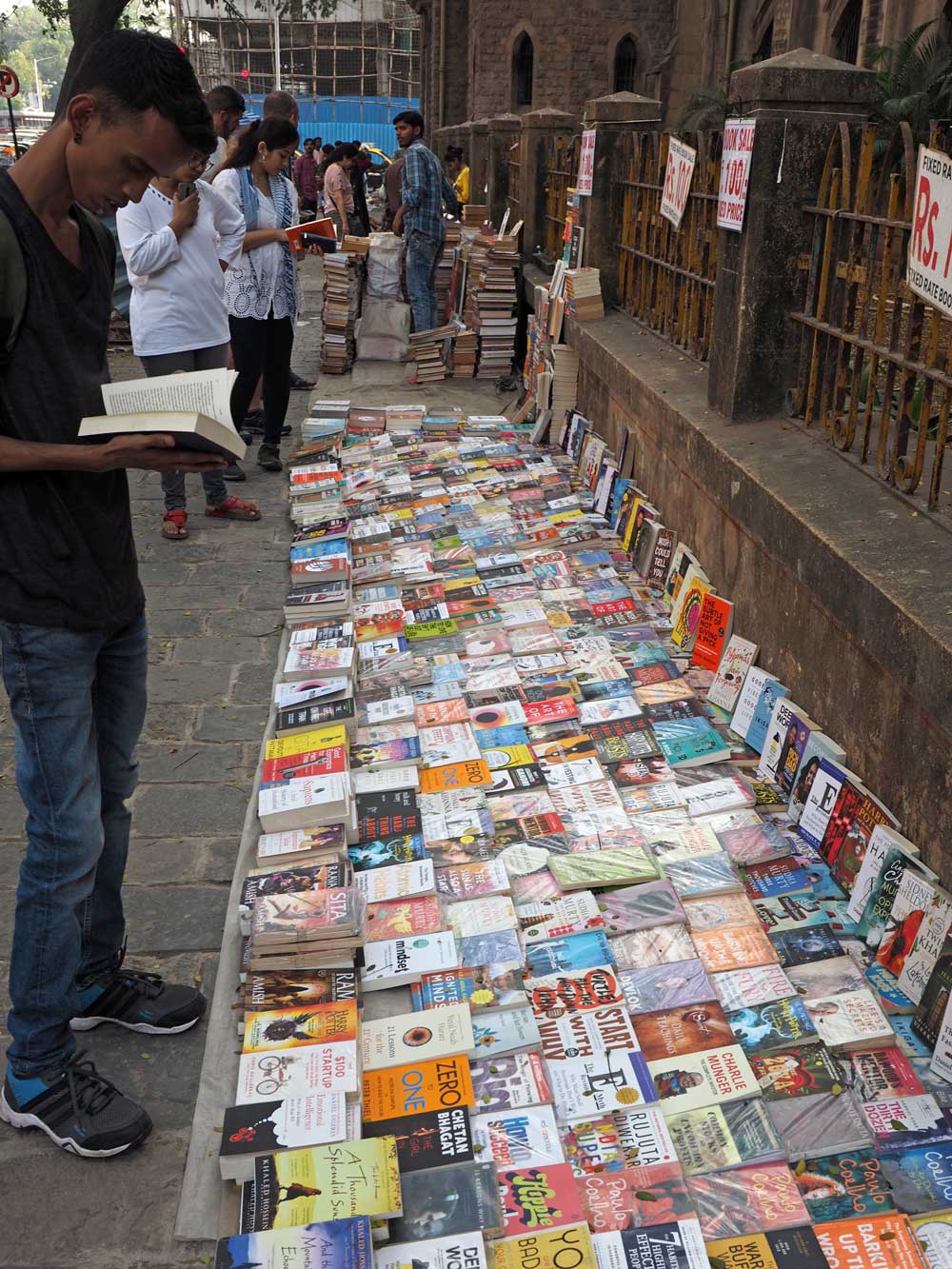
Lots of bargain books on the sidewalk!

Art Deco on the New India Assurance Company Building
Flora Fountain—a favorite for selfies—is a pretty white marble structure topped with a figure of the Roman goddess of flowers. I turned east here and detoured into St. Thomas’ Cathedral, filled with many memorials to soldiers, sailors, wives, and long-forgotten battles. Constructed from 1672 to 1718, it’s Mumbai’s oldest British building and first Anglican church. A ring of 19th-century structures that include the neoclassical Town Hall surround Horniman Circle. Tonight the garden park in the center would be hosting one of the festival’s theater dramas, but this would be in Hindi language.

Completed in 1864, Flora Fountain cost a tidy sum!

One of the four mythological figures on the corners

Flora has lots of friends!
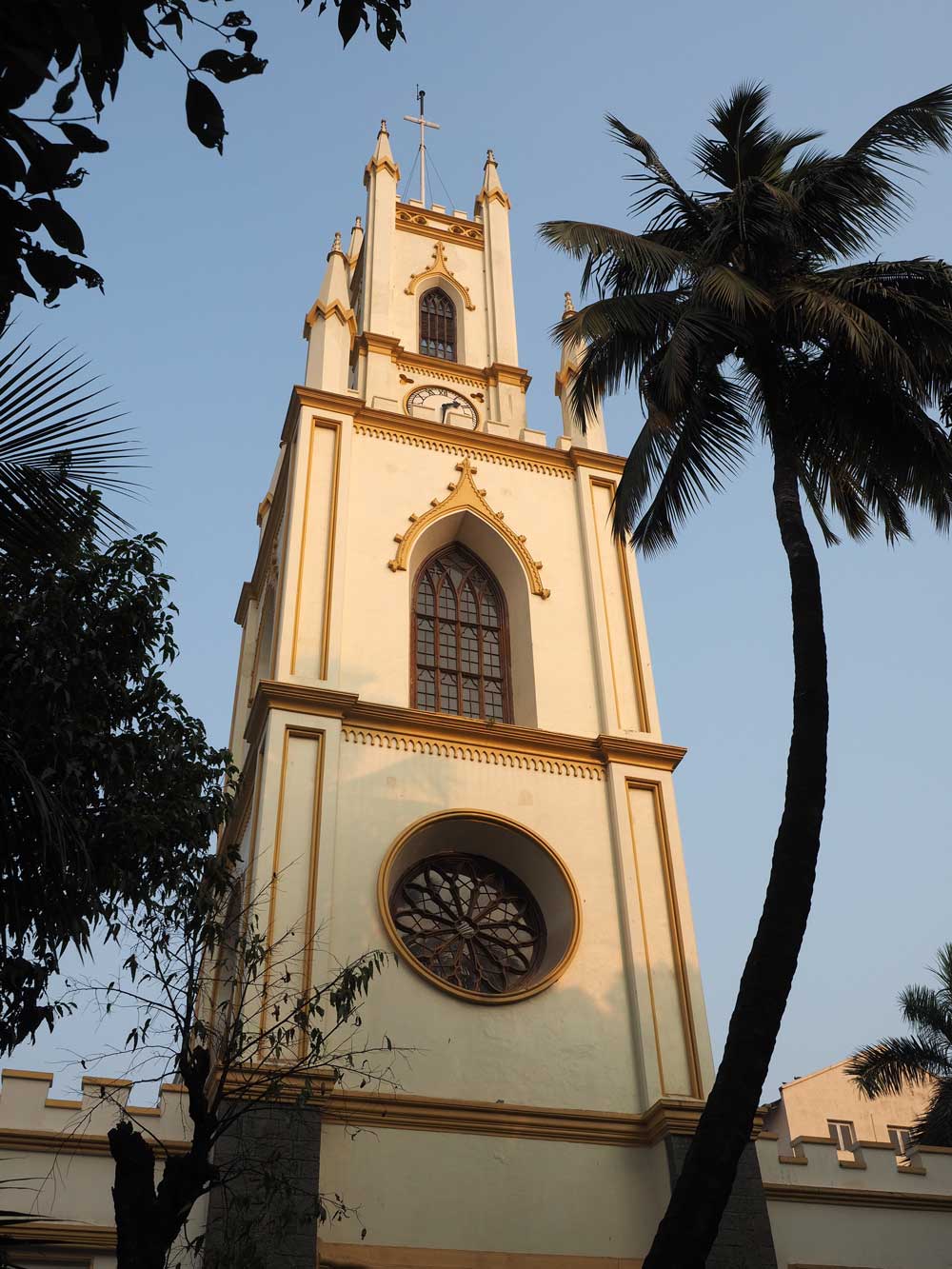
St. Thomas’ Cathedral
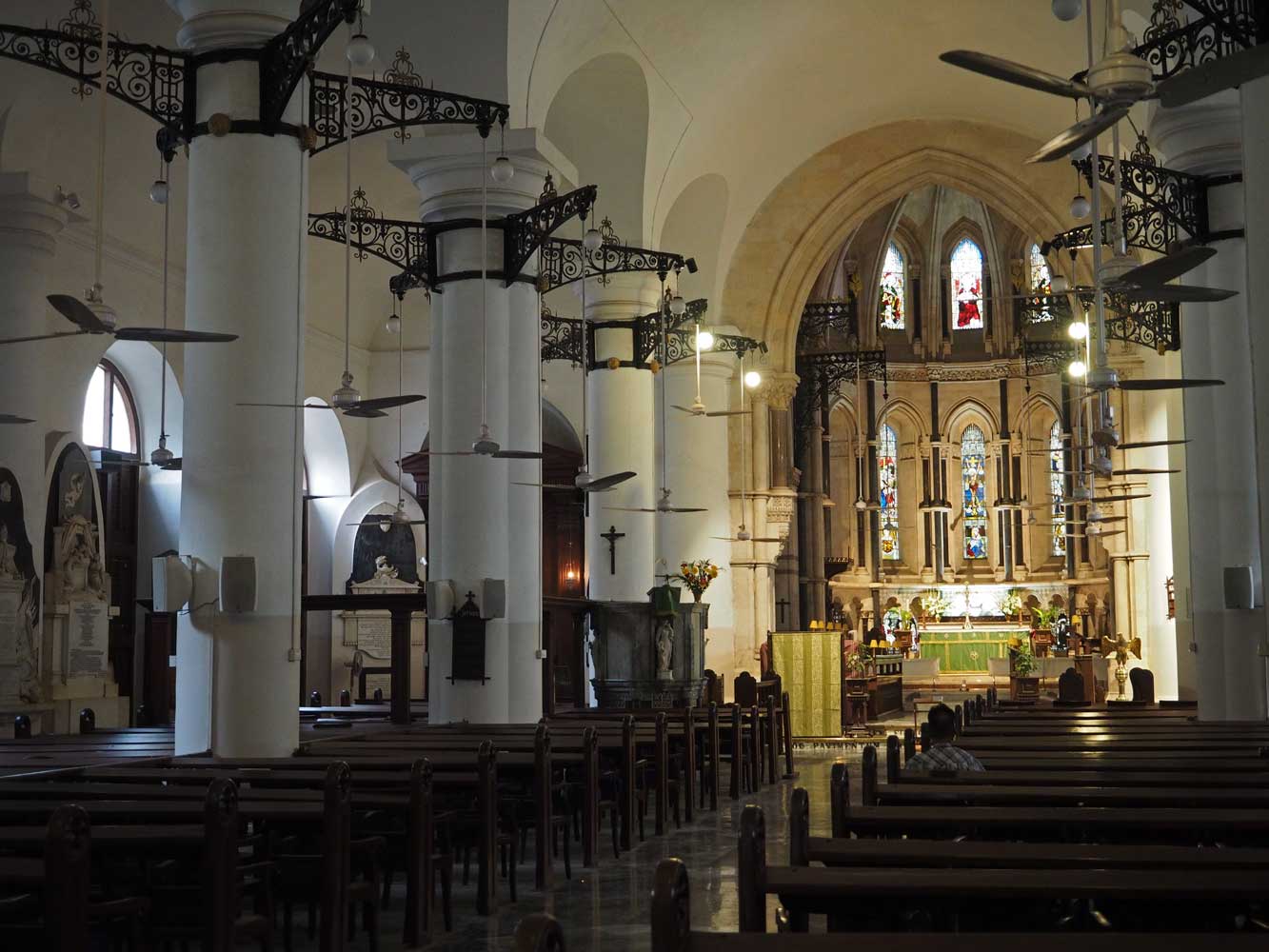
Interior
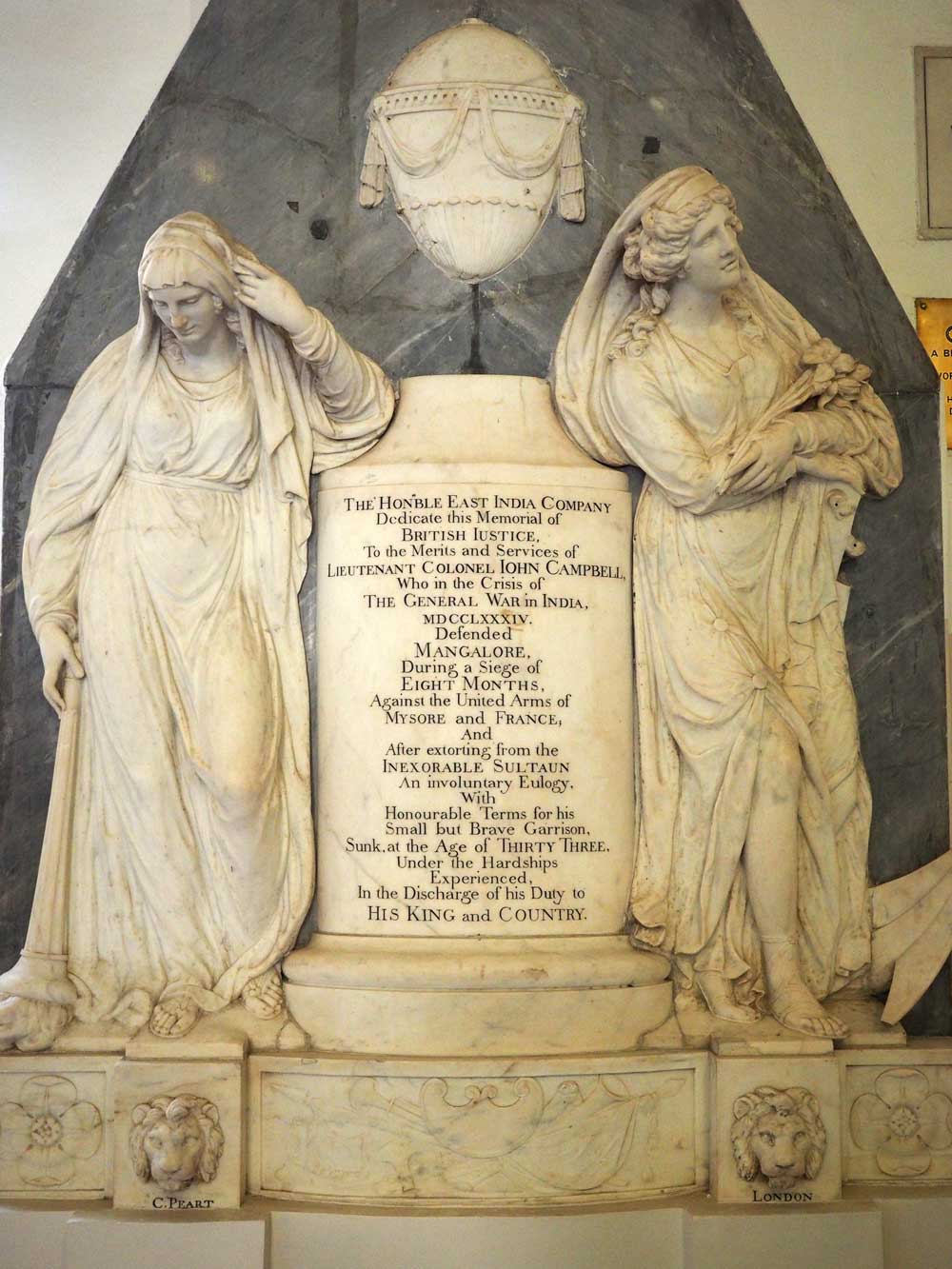
Marble memories in St. Thomas’ Cathedral
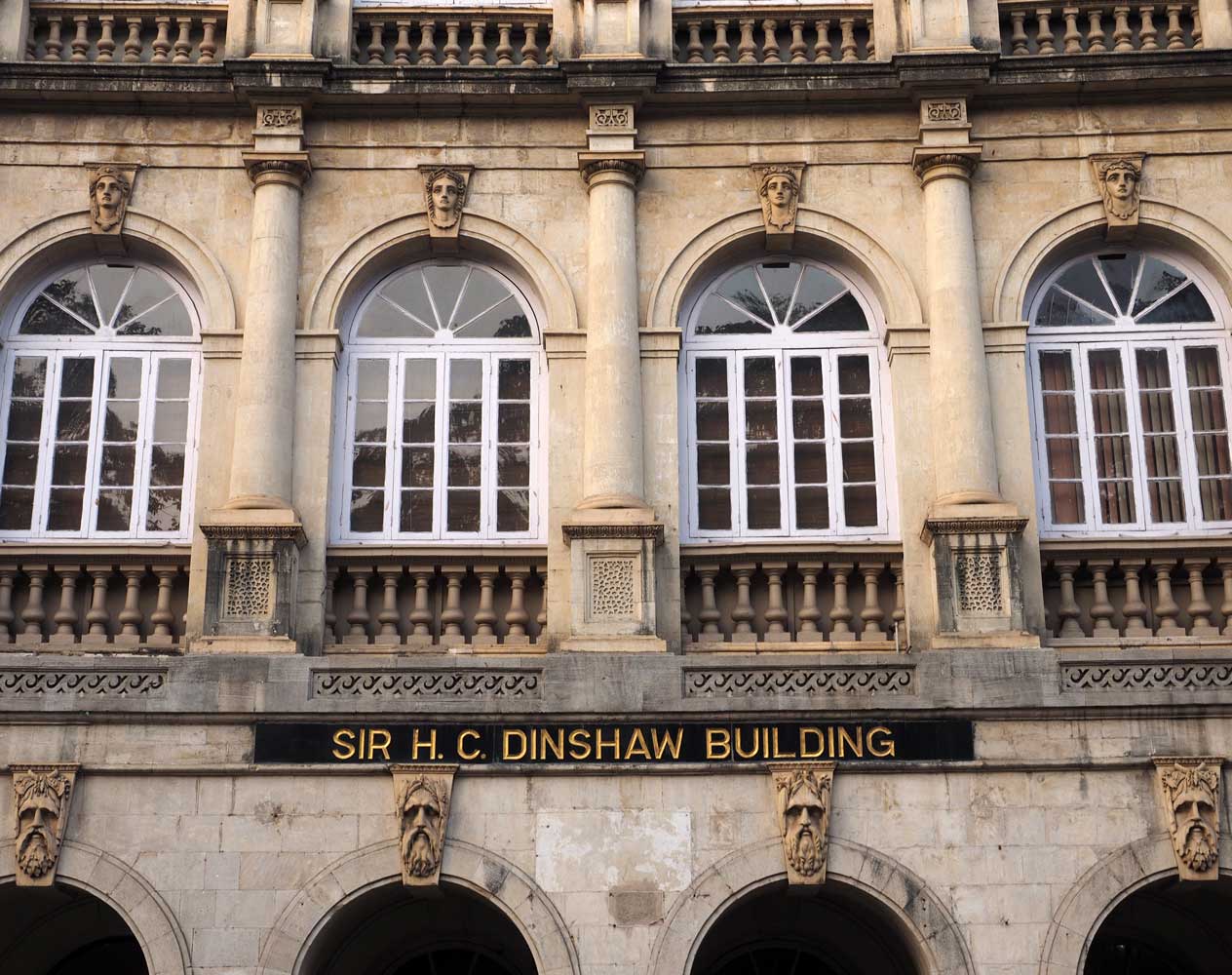
Detail of one of the many heritage buildings near Horniman Circle

Thirty steps lead up to the Town Hall, which opened in 1833.
Walking west and continuing past Flora Fountain a block, I turned south along the majestic buildings of the High Court and University of Mumbai. These front the vast Oval Maidan, now hosting seemingly countless teams playing cricket.
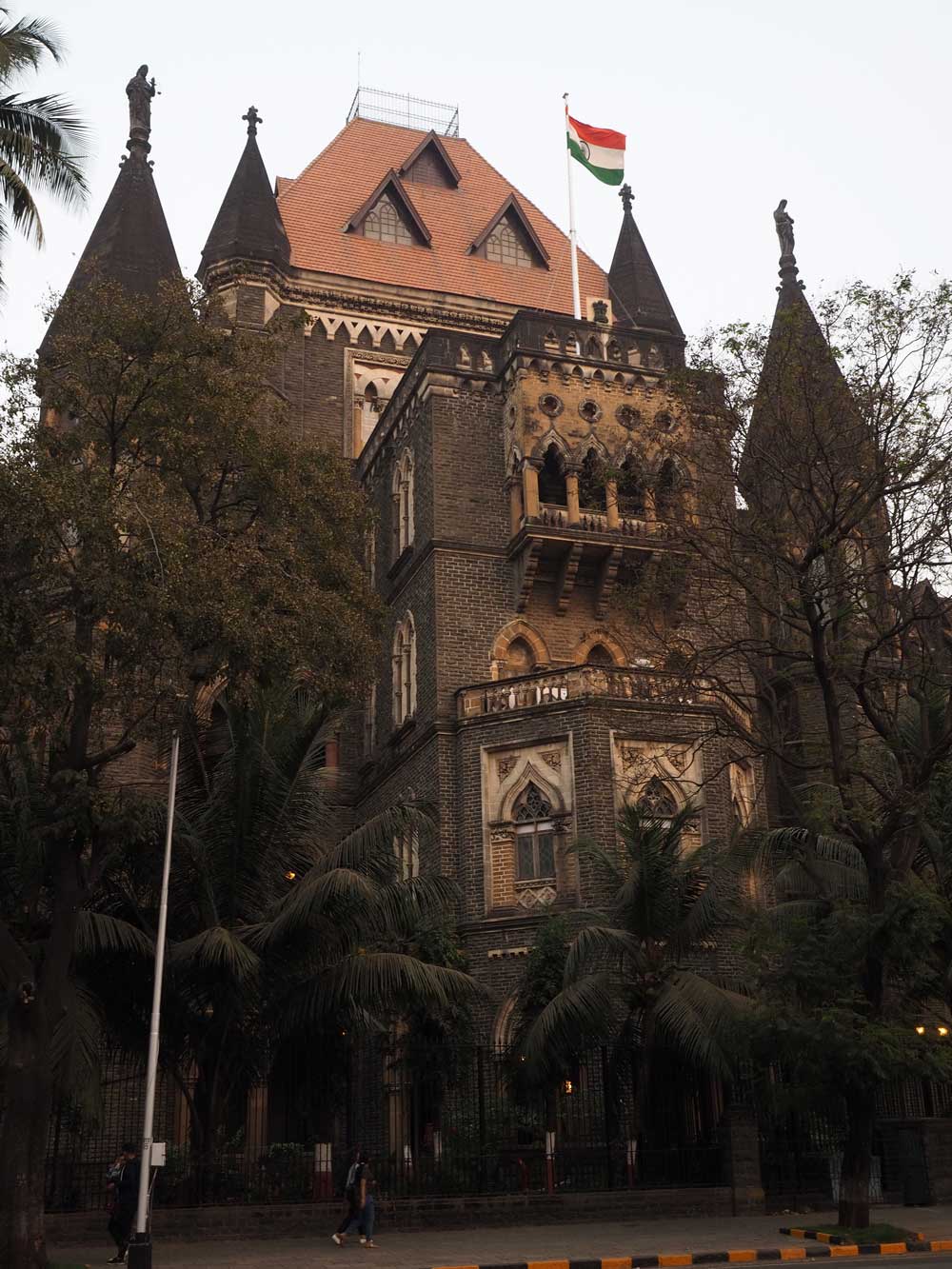
The stern looking Mumbai High Court was inaugurated in 1862.
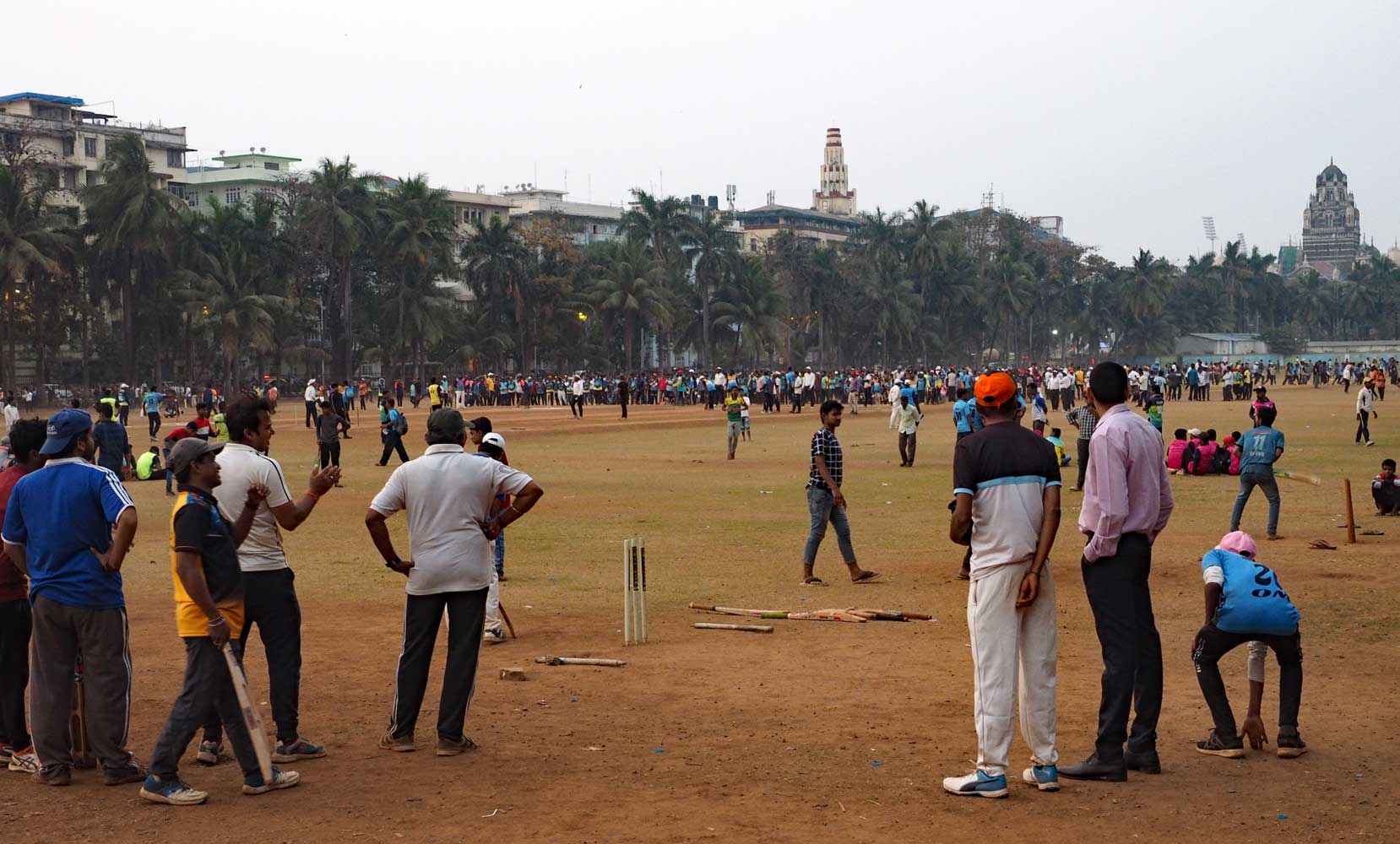
The Oval Maidan has room for lots of teams!
Just north of the Oval Maiden I turned into Cross Maidan, one of the main festival venues. Here I found a seat in the outdoor theater for a series of diverse dance performances—a solo traditional martial arts performance by an energetic male dancer, a classical Mohiniattam by a solo woman, folk dances from Rajasthan and Tamil Nadu, a group contemporary performance inspired by the rhythmical Kathak classical dance, tango by an Indian couple, and a contemporary ‘Sari’ dance about the stages of cotton from seed to the iconic cloth that has adorned Indians for millennia.
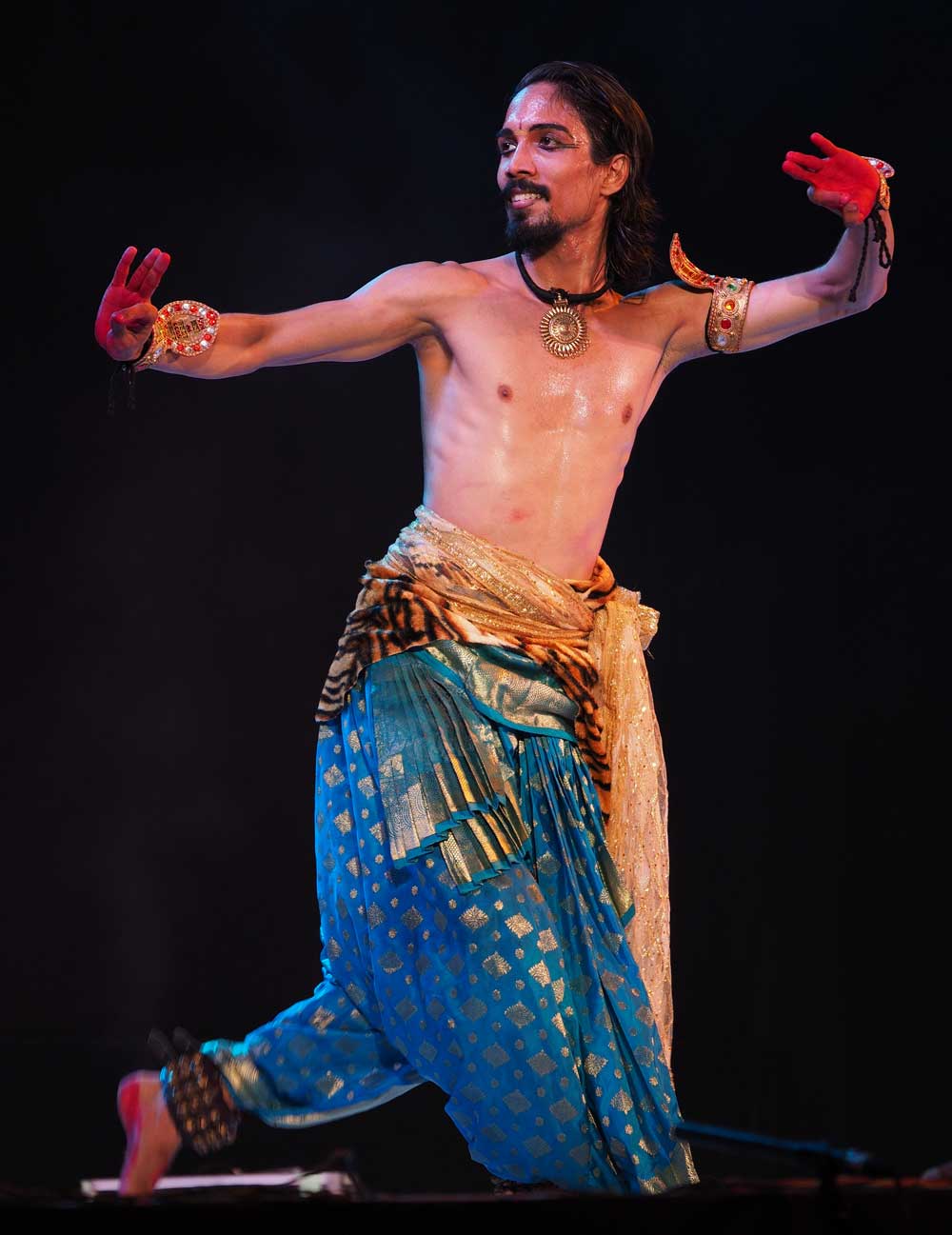
A martial arts movement

A Mohiniyattam dancer comes out.

Folk dance from Rajasthan

Folk dance from Rajasthan

A strange contemporary performance
10 February Mumbai
I felt like staying in,
then worked on a Buddhist editing project and this journal.
On to Mumbai—Part 2
Back to beginning of “Backpacking 2020: India, Singapore, and Philippines”